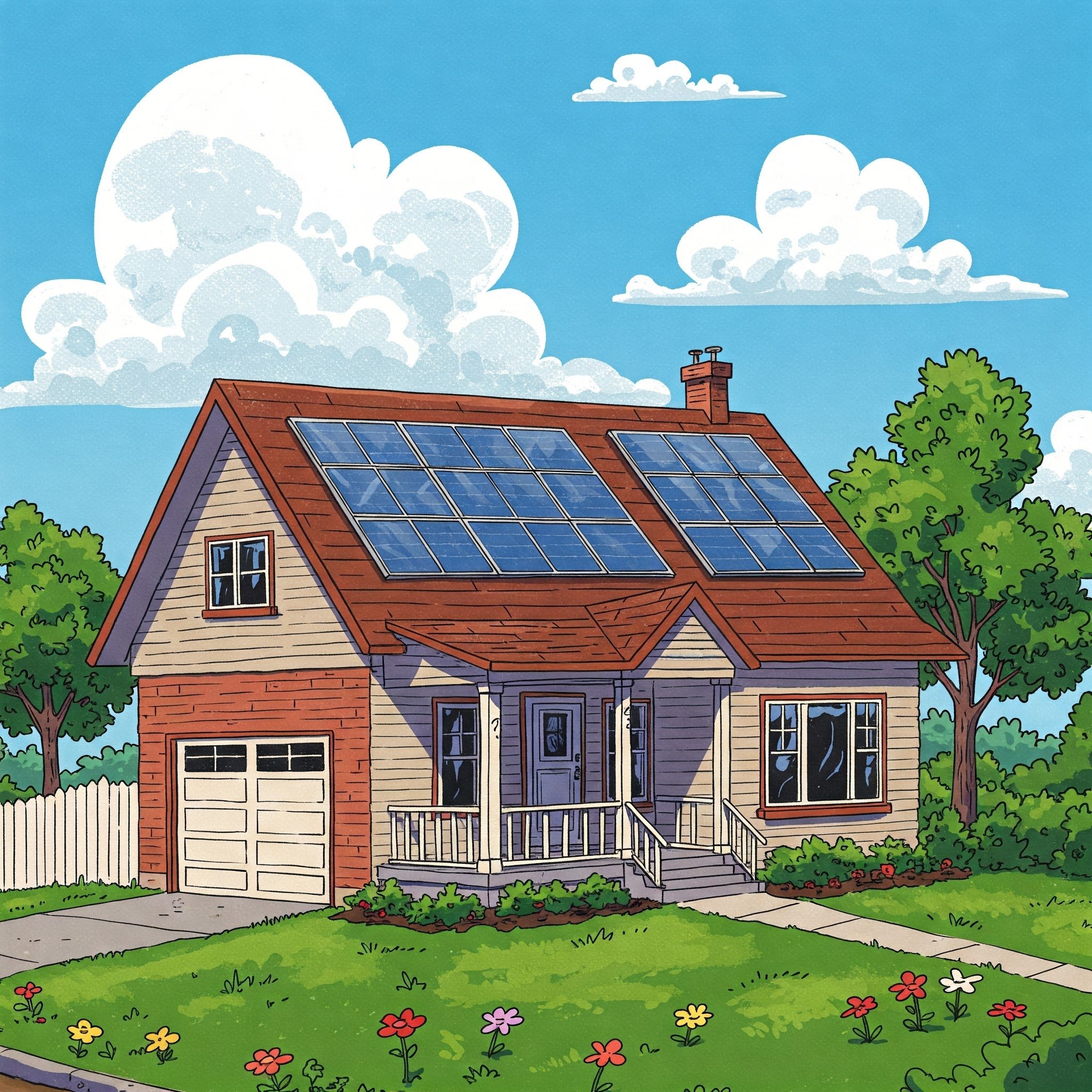
Adding solar To your home or business is a huge investment, let us help you navigate the nonsense
OPTIMAL SOLAR
Why optimal solar?
Simple - with Optimal Solar, you aren’t having to pay for the marketing costs, sales rep commissions, and miscellaneous overhead that’s otherwise baked into the cost of going with a traditional solar energy company. We don’t spend a penny on advertising or marketing or sales reps because we don’t have to. We understand that this an investment above all else and we make all our decisions based around the core principle of maximizing your investment.
It makes sense - if we’re scheduled to replace your roof and you’re thinking about adding solar to your home, doesn’t it make sense to do the work at the same time as the new roof is being installed? Yes, yes it does. Our install crews and office personnel are roofing experts and while adding solar energy to your home might seem complicated or difficult, it’s not. Adding solar panels to homes or businesses has been commonplace in the roofing industry for over 50 years and there’s nothing complicated about it. It’s a guaranteed return on your investment and it also provides a sense of security knowing that if the grid goes down, your life keeps going.
Understanding solar Energy: The basics
The largest costs of installing solar on a home can be broken down into several key components. Here’s a general percentage breakdown of costs:
Solar Panels (25–35%) – The photovoltaic (PV) panels themselves are one of the biggest expenses. Higher efficiency or premium-brand panels cost more.
Inverters (10–20%) – Converts DC electricity from the panels into AC electricity for home use. Microinverters (one per panel) tend to cost more than string inverters (one for the whole system).
Mounting & Racking (5–10%) – The structure that holds the panels in place on the roof or ground-mounted system.
Battery Storage (if applicable) (15–30%) – If you install a battery backup (like Tesla Powerwall or Enphase), this significantly increases the cost but provides energy storage and backup power.
Labor & Installation (10–20%) – Covers the cost of electricians, installers, and any necessary modifications to the electrical system.
Permitting & Inspection (2–5%) – Local government fees for permits and inspection to ensure code compliance.
Miscellaneous Costs (5–10%) – This includes electrical wiring, monitoring systems, sales/marketing expenses from the installer, and additional components like optimizers or charge controllers.
Example Cost Breakdown for a $25,000 System (Without Battery)
Panels: $7,500 (30%)
Inverters: $3,750 (15%)
Mounting & Racking: $1,875 (7.5%)
Labor & Installation: $3,750 (15%)
Permitting & Inspection: $1,250 (5%)
Miscellaneous: $2,500 (10%)
This section we like to call the “meat” of solar energy education. Now that you understand the basic costs, this is where we jump into the numbers. In this scenario, we’re talking about a $15,000 to $18,000 investment, which is not as large as an investment as a home, but still very substantial and one that should not be made lightly. You need to gather as much information as possible to make you feel comfortable with your decision, and we understand that. The scenario below dives deeper into the previously mentioned costs and the ROI on such an investment.
If you have any questions, give us a call and we’ll walk you through the numbers:
Understanding solar Energy: The MEAT
Average System Size and Cost in Illinois (7.5 kW System):
Total System Cost: $25,800
Federal ITC (30%): -$7,740
Net Cost After Federal ITC: $18,060
Long-Term ROI Over 25 Years
Upfront Cost
Total System Cost: $25,800
Federal Tax Credit (30%): -$7,740
Estimated State & Local Incentives (SRECs, Rebates, etc.): ~$3,000
Net Cost After Incentives: $15,060
Annual Savings on Electricity Bills
Average Electricity Rate in Illinois: ~$0.15 per kWh
Average Solar Production for a 7.5 kW System: ~9,000 kWh/year
Estimated Annual Savings: $1,350 per year (9,000 kWh × $0.15)
Payback Period (Break-Even Point)
Net Cost After Incentives: $15,060
Annual Savings: $1,350
Estimated Payback Period: ~11.2 years ($15,060 ÷ $1,350)
ROI Over 25 Years
Total Savings Over 25 Years: $33,750 ($1,350 × 25)
Total Profit After Investment: $18,690 ($33,750 - $15,060)
ROI Percentage: 124%
Additional Benefits
Increased Home Value: Studies show homes with solar sell for 4% more (~$10,000+ in this case).
Net Metering Benefits: Excess energy earns bill credits (though changing in 2025).
Protection from Rising Energy Costs: Illinois electricity rates typically rise 2–4% per year.


